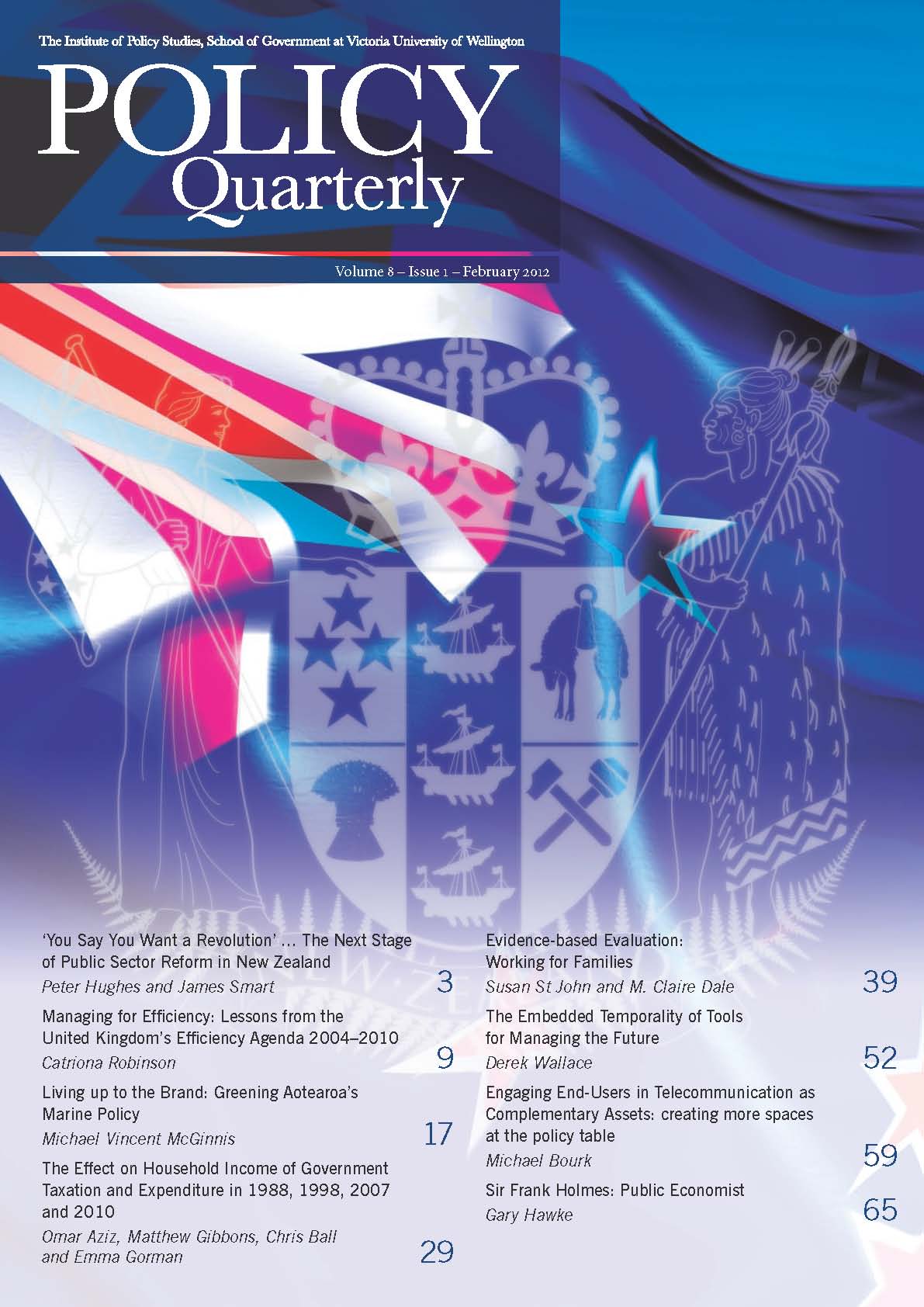Engaging end-users in telecommunication as complementary assets: creating more spaces at the policy table
DOI:
https://doi.org/10.26686/pq.v8i1.4410Keywords:
ultra-fast broadband (UFB), telecommunication infrastructure, national broadband network (NBN), World Bank, public investment, 'consumer–citizen’, ICTAbstract
In recent years, governments and telecommunication companies across the world have poured billions of taxpayer and shareholder dollars into establishing national broadband networks in the light of promises of spectacular returns on investment.1 For example, it has been estimated that the $NZ1.5 billion ultra-fast broadband (UFB) network will account for a 7.2% increase in New Zealand’s GDP by 2026, assuming the roll-out is achieved by 2014 (Berl Economics, 2010, 8). Although that roll-out date now appears unlikely, even half the projected growth would indicate significant benefit from the UFB to the economy. Access Economics in Australia gives more a modest GDP growth projection of 1.1% as a direct consequence of next-generation telecommunication infrastructure (Martin, 2010), involving a $A40 billion investment in Australia’s national broadband network (NBN), of which taxpayers will contribute at least half (Given, 2010, 540). Similarly, the World Bank estimates the economic impact of broadband on high-income economies at 1.2% growth in GDP (Quiang, 2009).
Downloads
Downloads
Published
Issue
Section
License
Permission: In the interest of promoting debate and wider dissemination, the IGPS encourages use of all or part of the articles appearing in PQ, where there is no element of commercial gain. Appropriate acknowledgement of both author and source should be made in all cases. Please direct requests for permission to reprint articles from this publication to Policy-Quarterly@vuw.ac.nz.



